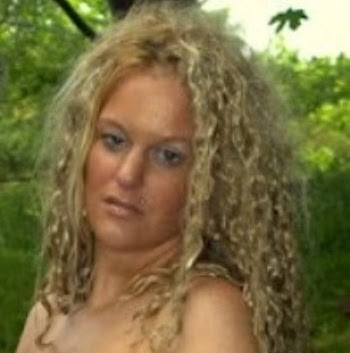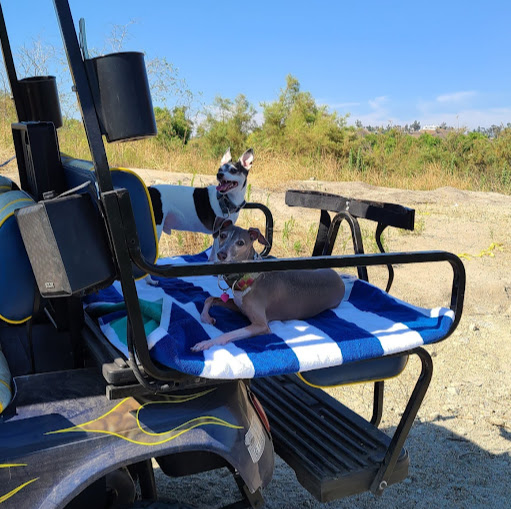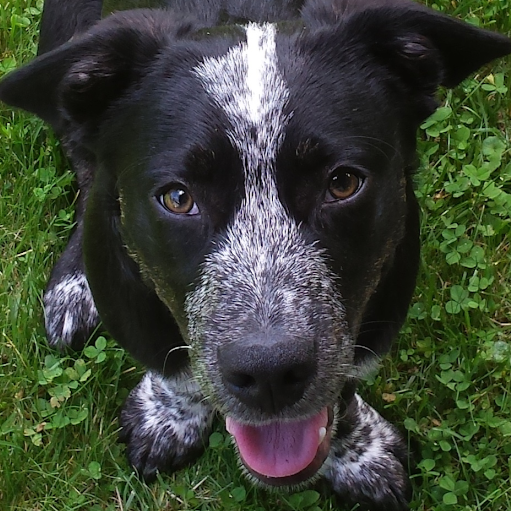Michelle H Demers
age ~60
from Harrisburg, NC
- Also known as:
-
- Michelle Howe Demers
- Michelle M Demers
- Michelle H Vorhees
- Michelle H Howe
- Michelle M Howe
Michelle Demers Phones & Addresses
- Harrisburg, NC
- Apex, NC
- Sarasota, FL
- Sanford, NC
- White Pigeon, MI
- Morrisville, NC
- New Hill, NC
- Oakland, CA
- Raleigh, NC
Resumes

Broadcast Producer At United States Air Force
view sourcePosition:
Broadcast Producer at United States Air Force
Location:
US Military Posts in Europe
Industry:
Military
Work:
United States Air Force since Aug 2007
Broadcast Producer
AFN Lajes Apr 2009 - Jul 2010
American Forces Network Europe
Broadcast Producer
AFN Lajes Apr 2009 - Jul 2010
American Forces Network Europe
Education:
Ashford University 2010 - 2012
BA, Social Science University of Maryland University College 2008 - 2010
BA, Social Science University of Maryland University College 2008 - 2010

Owner And Executive Producer At Rbkc, Inc.
view sourcePosition:
Executive Producer at RBKC, Inc., Advisory Engineer at Bell + Howell, Design Engineer, Owner at Strategic Consulting and Services (Sole Proprietorship)
Location:
Raleigh-Durham, North Carolina Area
Industry:
Mechanical or Industrial Engineering
Work:
RBKC, Inc. since Oct 2009
Executive Producer
Bell + Howell - Durham, NC since Jun 2009
Advisory Engineer
Strategic Consulting and Services since Jun 1996
Design Engineer, Owner
[TC]2 1992 - Mar 2009
Senior Design Engineer
Memorex Telex Jun 1987 - Nov 1992
Mechanical Engineer
Executive Producer
Bell + Howell - Durham, NC since Jun 2009
Advisory Engineer
Strategic Consulting and Services since Jun 1996
Design Engineer, Owner
[TC]2 1992 - Mar 2009
Senior Design Engineer
Memorex Telex Jun 1987 - Nov 1992
Mechanical Engineer
Education:
North Carolina State University
Skills:
Solidworks
CAD
3D
Mechanical Engineering
Product Design
CAD
3D
Mechanical Engineering
Product Design
Interests:
Mechanical design, 3D imaging, animation, video editing, biking, Suzuki violin, skiing, golfing
Name / Title
Company / Classification
Phones & Addresses
Owner
Strategic Consulting and Services
Engineering Services
Engineering Services
2508 New Hl, New Hill, NC 27562
9192918043
9192918043
Us Patents
-
Configurable Mannequin Form
view source -
US Patent:20040222249, Nov 11, 2004
-
Filed:Mar 15, 2004
-
Appl. No.:10/800947
-
Inventors:Martin Bentham - South Yorkshire, GB
Geoffrey Bingham - Warwickshire, GB
David Bruner - Cary NC, US
Michelle Demers - New Hill NC, US -
International Classification:D06C015/00
-
US Classification:223/066000
-
Abstract:A mannequin form having a first section and a second section is provided. The first and second sections are made of a selected material that is resistant to damage from a stress selected from the group consisting of heating, cutting, dying, and any combinations thereof. The second section is releasably secured to the first section to define a predetermined three-dimensional shape. The first section abuts the second section to define a first smooth mating line.
-
Method And System For Mail Item Turnover
view source -
US Patent:20140034450, Feb 6, 2014
-
Filed:Aug 2, 2012
-
Appl. No.:13/565522
-
Inventors:Michelle DEMERS - New Hill NC, US
-
International Classification:B65G 47/248
-
US Classification:198403
-
Abstract:The present application relates to techniques and equipment for transporting and inverting material, such as a mail item, and exchanging the lead and trail edge of the material along a transport feed path. The equipment conveys material to a holding mechanism that rotates to a suitable angle to the transport feed path and within the plane of the flat material. The direction of the material is reversed while contained in the holding mechanism. The holding mechanism is rotated to turning over the material, e.g., face-up to face-down, and exchanges the lead and trail edges with respect to the feed path.
-
Systems, Methods And Computer Program For Measuring The Surface Contour Of An Object
view source -
US Patent:6373963, Apr 16, 2002
-
Filed:Feb 2, 1999
-
Appl. No.:09/241708
-
Inventors:Michelle H. Demers - New Hill NC
Richard Wulpern - Sanford NC
Jeffery Hurley - Cary NC
John R. Grindon - Hazelwood MO -
Assignee:Textile/Clothing Technology Corporation - Cary NC
-
International Classification:G06K 900
-
US Classification:382108, 108100
-
Abstract:Systems methods and computer program products are provided for obtaining a three-dimensional data set that is representative of a surface of a three-dimensional object. A grating pattern, having a sinusoidally varying intensity pattern, is projected onto the surface of an object. The projected grating pattern is shifted a number of times and two-dimensional deformed grating images of an area segment of the object surface are captured and stored. A two-dimensional array of optical phase values is then created. Optical phase values in the two-dimensional array are then used to generate a plurality of three-dimensional data points that represent respective points on the surface of the object. Each three-dimensional data point is found by locating, for each pixel in the detector array of pixels, a point on the surface of the object wherein a ray from a respective pixel passing through a nodal point of a detector lens is intersected by a plane of constant phase from the projected first grating pattern passing through a nodal point of a projector lens.
-
Solid Ejector In A Solid-Production System
view source -
US Patent:20200103154, Apr 2, 2020
-
Filed:May 2, 2019
-
Appl. No.:16/401775
-
Inventors:- Charlotte NC, US
Thomas Josefsson - Concord NC, US
Alexander Adam Papp - Raleigh NC, US
Michelle Howe Demers - Holly Springs NC, US
Paul Andrew Hakenewerth - Raleigh NC, US
David Alan Clemens - Chapel Hill NC, US -
International Classification:F25C 1/10
F25C 1/04
F25C 1/25
F25C 5/182
F25C 1/246 -
Abstract:A solid production system for producing a solid on demand is provided herein. In some aspects, the solid-production system includes a solid ejector arranged to loosen a solid in each of one or more fluid molds indexed into an ejection position relative to the solid ejector, the one or more fluid molds including a bottom surface and side surfaces extending therefrom, wherein the solid ejector is actuatable so as to be urged into contact with and to apply pressure to at least one of the side surfaces of the fluid mold indexed into the ejection position so as to loosen the solid within the fluid mold in preparation for dispensing the solid from the fluid mold.
-
Methods And Systems To Create A Mailpiece With An Inline Buckle Folder
view source -
US Patent:20190160856, May 30, 2019
-
Filed:Nov 30, 2017
-
Appl. No.:15/827659
-
Inventors:- Durham NC, US
Craig S. Adcock - Raleigh NC, US
Michelle Demers - New Hill NC, US
Vince Tucci - Raleigh NC, US
Dale R. Curry - Chapel Hill NC, US
Todd Murdock - Clayton NC, US -
International Classification:B43M 3/04
B31B 70/26 -
Abstract:Systems and methods of forming a mailpiece by folding an envelope sheet around one or more insert sheets (e.g., an insert stack) include creating the insert stack, staging the insert stack proximate to the transport path of the envelope sheet, dispensing the insert stack onto the envelope sheet, applying adhesive to the envelope sheet, using a buckle folder to wrap the envelope sheet at least partially around the insert stack to form an unsealed envelope without stopping the envelope sheet and without bending the insert stack, folding the envelope flap of the unsealed envelope onto the back thereof using a plow folder, and sealing the flap of the envelope to the back of the envelope, creating the mailpiece.
-
Self-Centering Mechanism For An Appliance Knob
view source -
US Patent:20180259996, Sep 13, 2018
-
Filed:Mar 13, 2017
-
Appl. No.:15/457625
-
Inventors:- Charlotte NC, US
Kevin Carpenter - Morrisville NC, US
Michelle Demers - Morrisville NC, US
David A. Clemens - Chapel Hill NC, US -
International Classification:G05G 5/05
G05G 1/10
G05G 5/03 -
Abstract:A self-centering mechanism for an appliance knob includes a shaft member defining a central axis, and a rotatable member engaged and rotatable with the shaft member about the central axis. The rotatable member defines a first arcuate slot opposed to a second arcuate slot. A first stationary pin extends through the first arcuate slot and a second stationary pin extends through the second arcuate slot. A centering member is pivotably engaged with the rotatable member about a pivot location, and is configured to contact the first and second stationary pins with the rotatable member disposed in a centered rotational position. A biasing member is configured to bias the centering member about the pivot location toward the shaft member and the first and second stationary pins to urge the rotatable member to the centered rotational position.
-
Self-Centering Mechanism For A Rotatable Shaft
view source -
US Patent:20170351292, Dec 7, 2017
-
Filed:Jun 7, 2016
-
Appl. No.:15/175693
-
Inventors:- Charlotte NC, US
Thomas Josefsson - Concord NC, US
Kevin Carpenter - Morrisville NC, US
Michelle Demers - Morrisville NC, US -
International Classification:G05G 5/05
G05G 5/04
G05G 1/10 -
Abstract:A self-centering mechanism for a rotatable shaft includes first and second centering members. Each centering member defines a first and second arcuate slot. A stationary pin extends through the first arcuate slots of the centering members. A rotatable shaft member extends through the centers of the centering members and is disposed between the first and second arcuate slots. A support member extends radially from and is fixed to the shaft member so as to be rotatable therewith. An actuating pin extends from the support member and through the second arcuate slots, and engages the second arcuate slots to rotate one of the first and second centering members. At least one biasing member is in communication with an anchoring structure and rotationally biases at least one of the first and second centering members to a registration position upon release of the rotatable shaft.
Googleplus

Michelle Demers

Michelle Demers

Michelle Demers

Michelle Demers

Michelle Demers

Michelle Demers

Michelle Demers

Michelle Demers

Michelle DeMers
view source
Michelle DeMers
view source
Michelle Demers
view source
Michelle DeMers
view source
Michelle Demers Janssen
view source
Michelle Demers
view source
Michelle Johnston Demers
view source
Michelle Demers
view sourceClassmates

Michelle Demers (Michelle...
view sourceSchools:
Deering High School Portland ME 1992-1996
Community:
Cheryl Burns

Michelle Demers
view sourceSchools:
Hughenden High School Hughenden Azores 1997-2001
Community:
Ila Broughton, Kathleen Hall, Barbara Marvin, Orlene Cameron

Michelle Demers (Hayward)
view sourceSchools:
Portland High School Portland ME 1994-1998

Michelle Demers
view sourceSchools:
Oxford Hills High School South Paris ME 1996-2000

Michelle Scott (Demers)
view sourceSchools:
Greater Lawrence Voc-Tec High School Andover MA 1986-1990
Community:
Fernando Machado, Shannon Middlemiss

Michelle Demers
view sourceSchools:
Lincoln Elementary School Edison NJ 1985-1991, Herbert Hoover Middle School Edison NJ 1991-1994
Community:
Colleen Selert, John Heller, Mary Lynch

Michelle Demers (Johnston)
view sourceSchools:
Glenora Elementary School Edmonton Azores 1957-1963, Westminster Junior High School Edmonton Azores 1963-1966
Community:
Stu Guthrie, Pat Weidenhamer, Paula Marvin, Laurie Cote

Michelle Demers
view sourceSchools:
Woodsville High School Woodsville NH 1969-1970
Community:
Virginia Macomber, Lisa Sherman, Bryon Seace
Myspace
Youtube
Get Report for Michelle H Demers from Harrisburg, NC, age ~60





